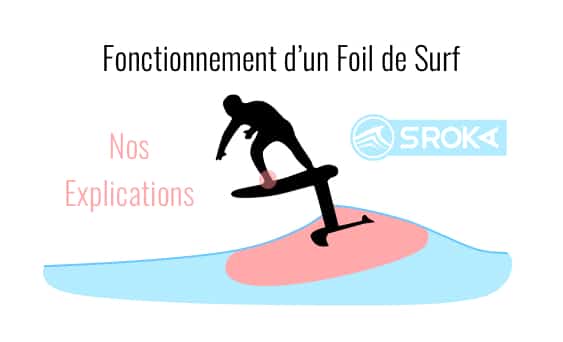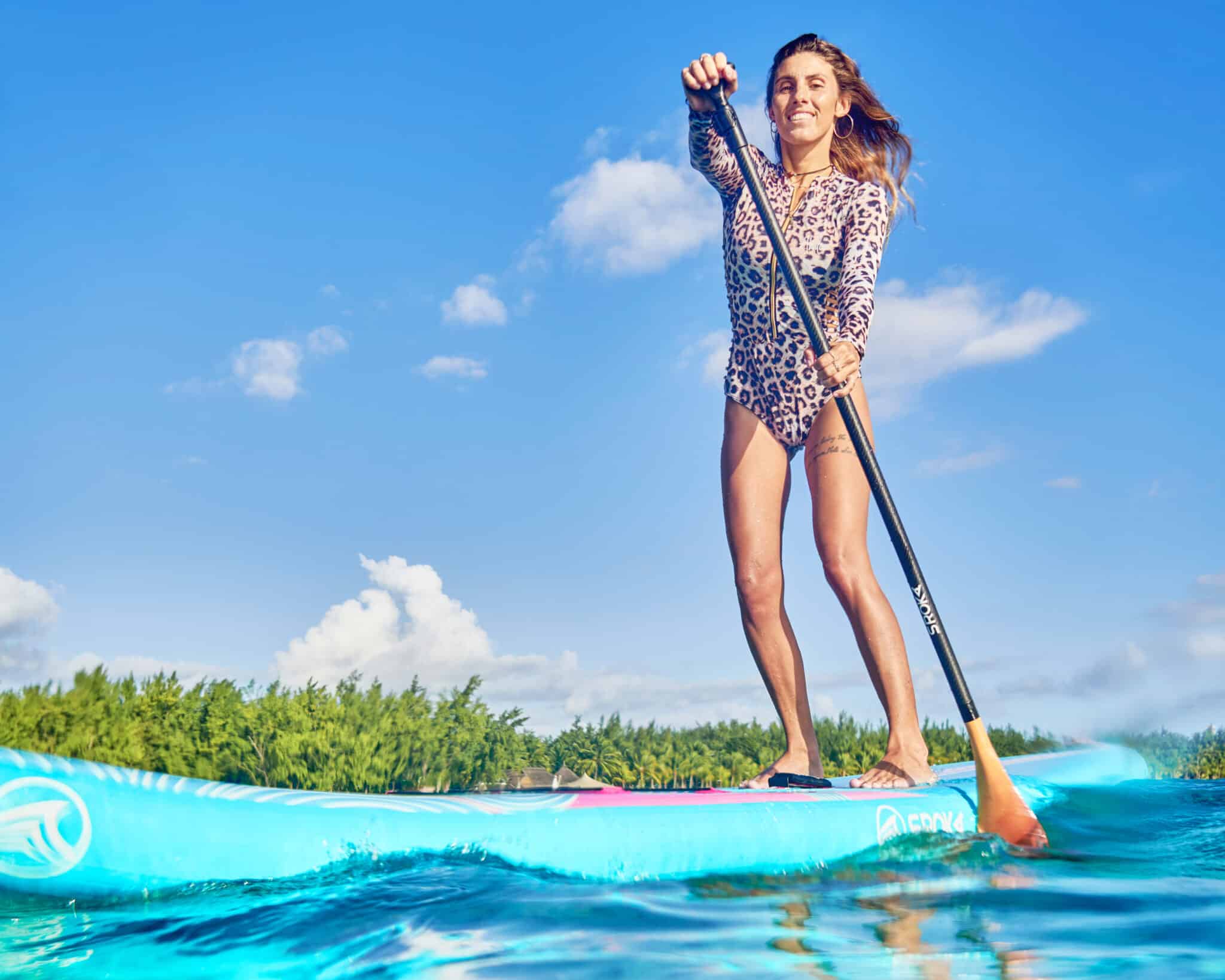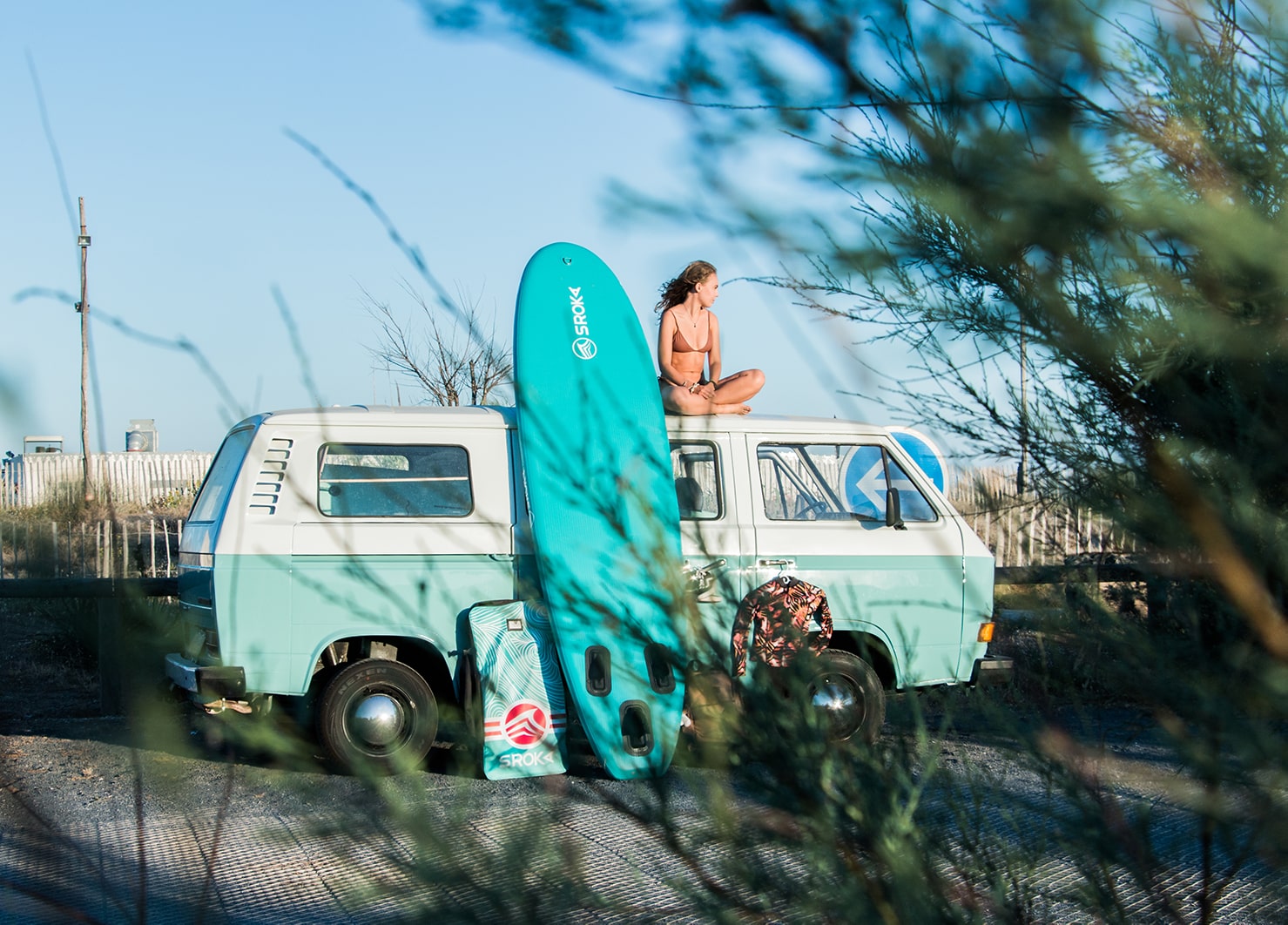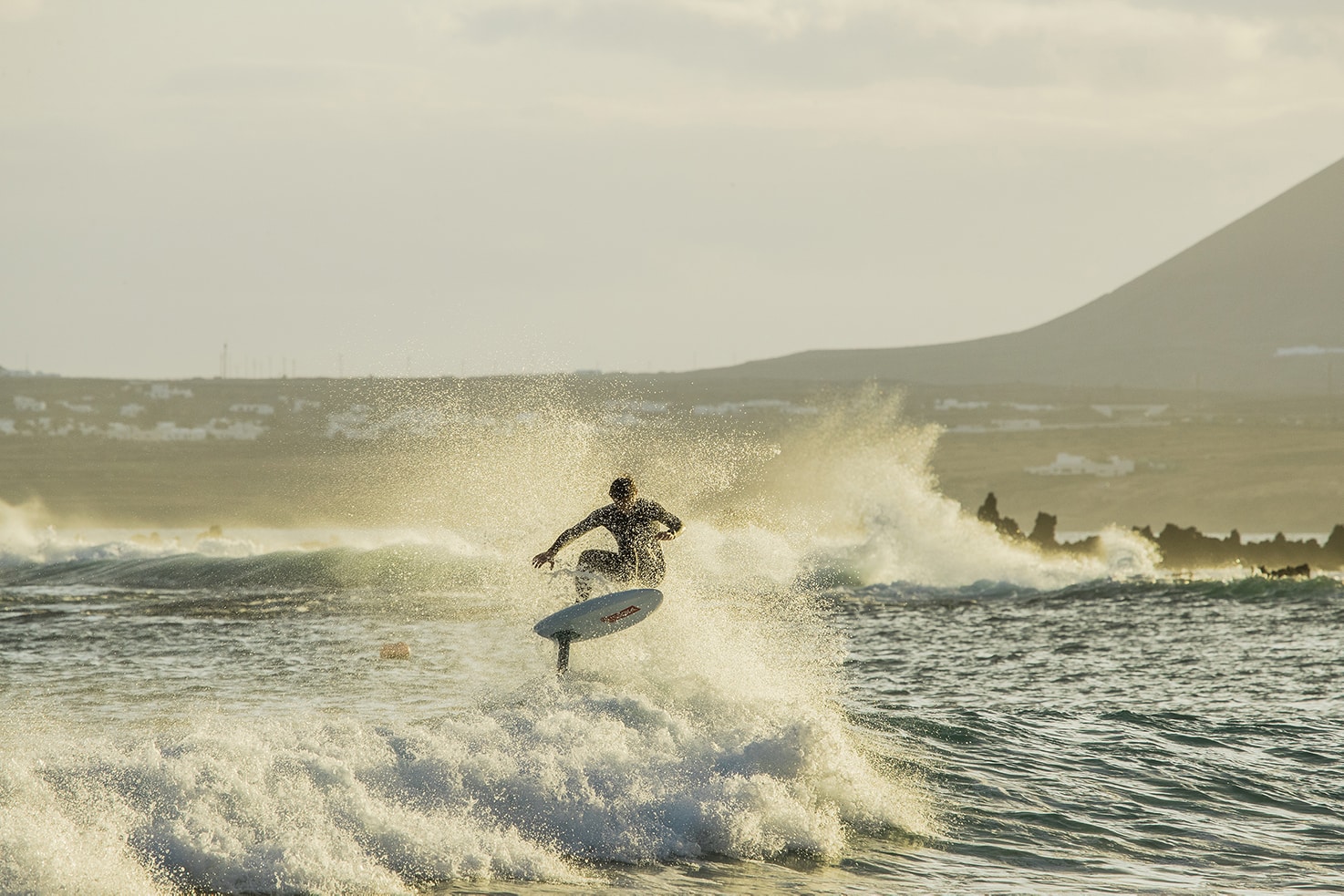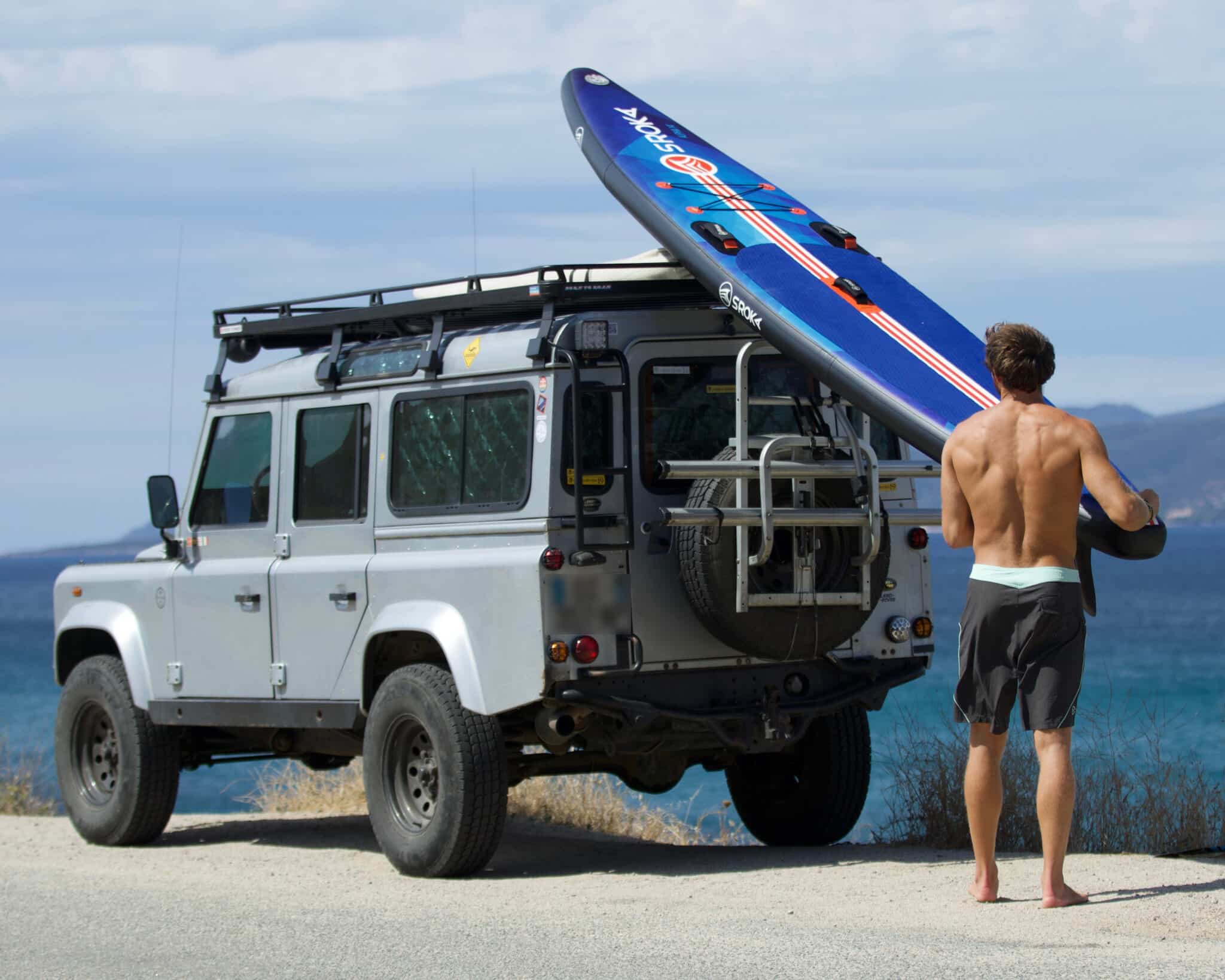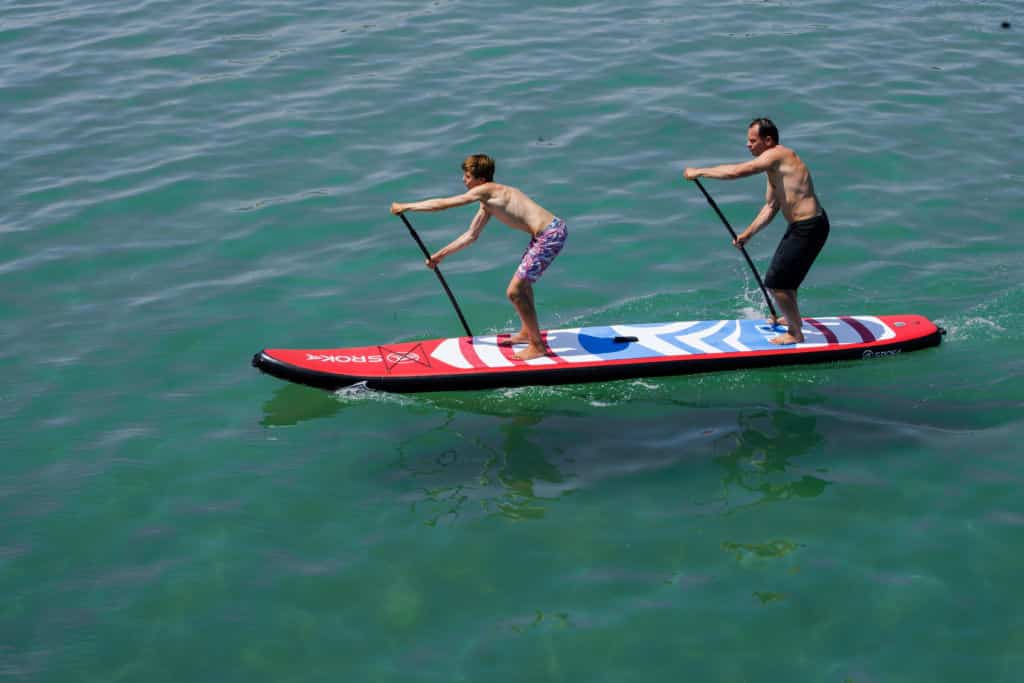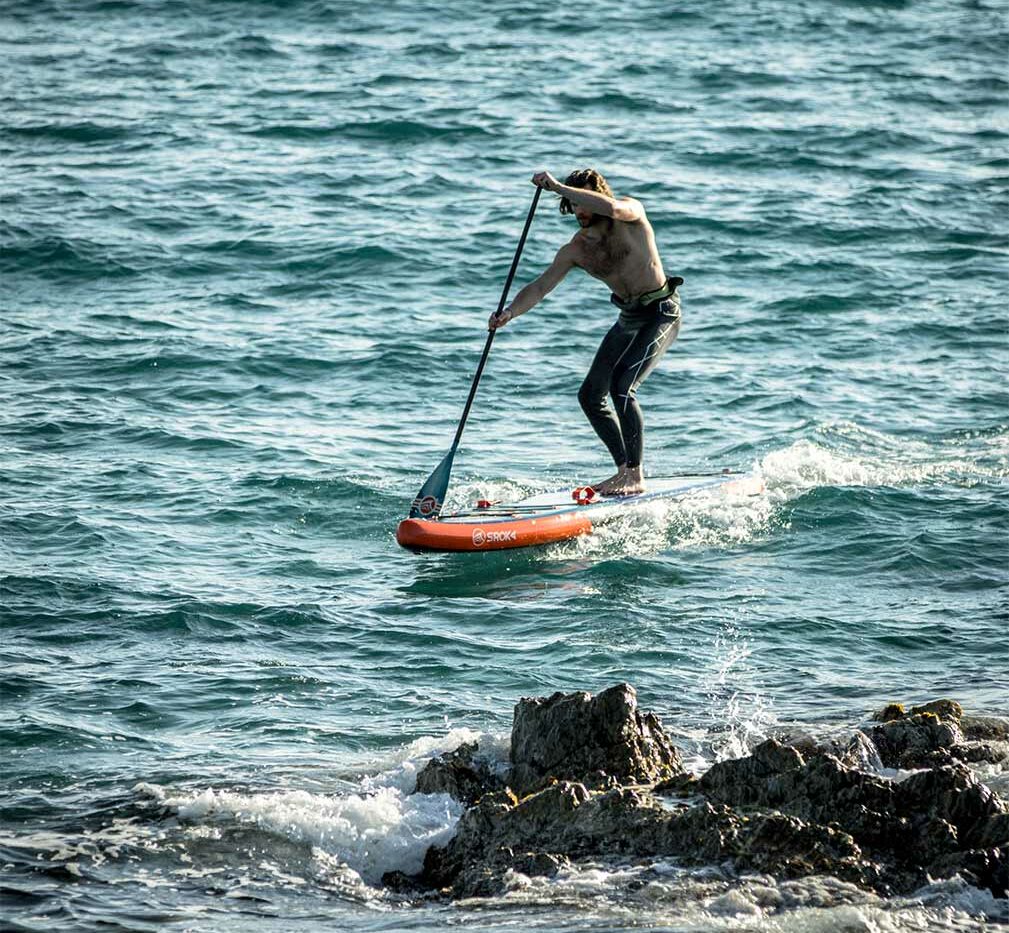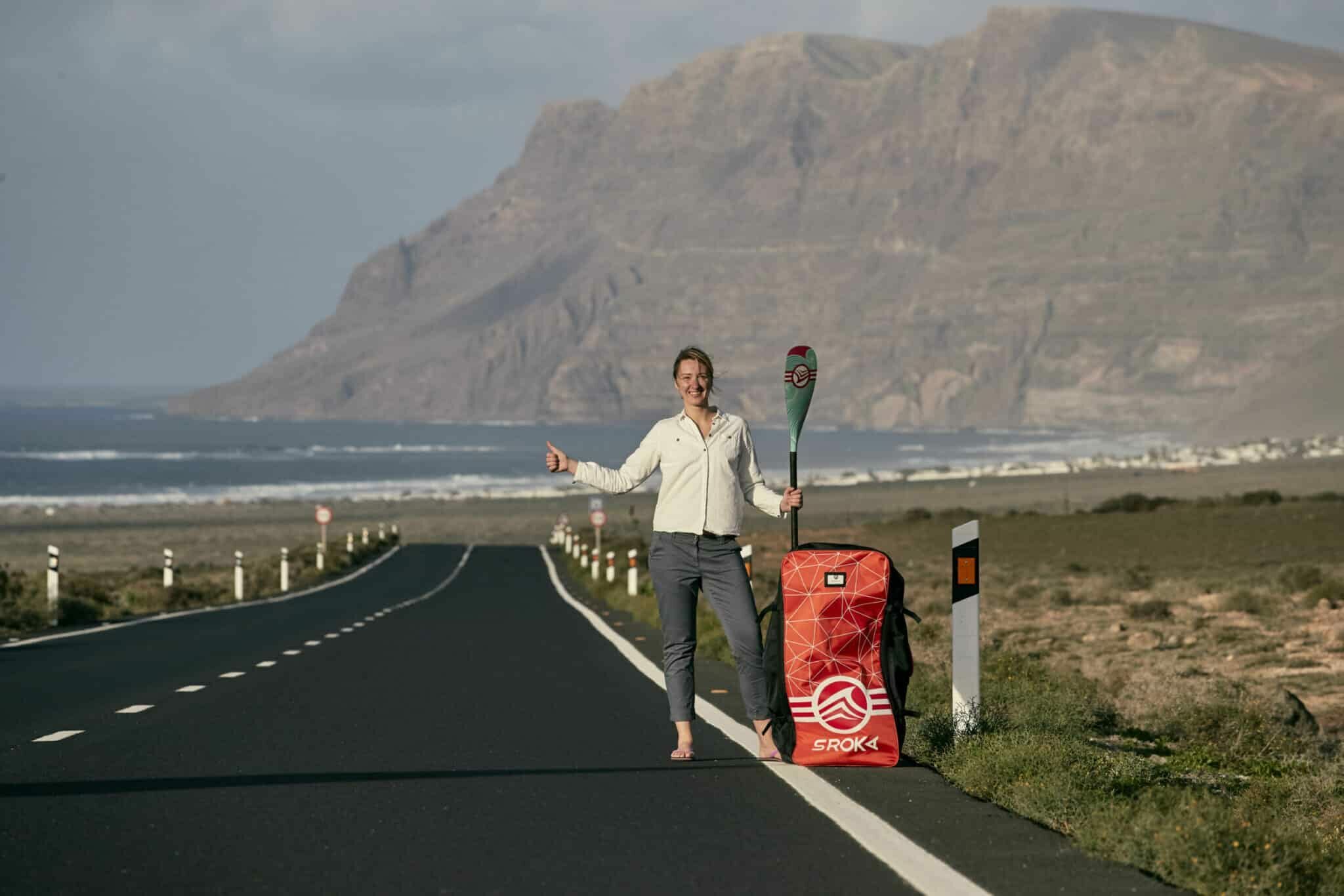 LE MAGAZINE
LE MAGAZINE5 tips for getting started Foil Downwind

Imagine gliding over the waves, almost as if you were flying over the ocean!
Derived from the downwind technique that has been practised at SUP for the past ten years, the foil downwind consists of flying down the chop while letting yourself be carried by the wind and the swell trains!
Downwind is the definition of freedom. Set off with your board and paddle for flights that can last several hours, depending on the spot you choose.
The idea in downwind is not to go as fast or carve as hard as possible, but to glide as long as possible on the swell, using your energy to move forward.
Who can go foil downwind?
The Foil downwind can be accessed via different routes, some more difficult than others and requiring greater experience.
- The wing optionwing learning foil is the easiest way to learn. When sailing with a wing, find a swell train, freefly the wing and let the wave carry you along. As you gain experience, you’ll be able to start paddling and do real downwinds.
- Another option, for the more experienced paddler, is to jump straight into the deep end of the pool and learn how to manage take-offs and trajectories.
So anyone can practice downwind on their own scale, and with practice, anything is possible.
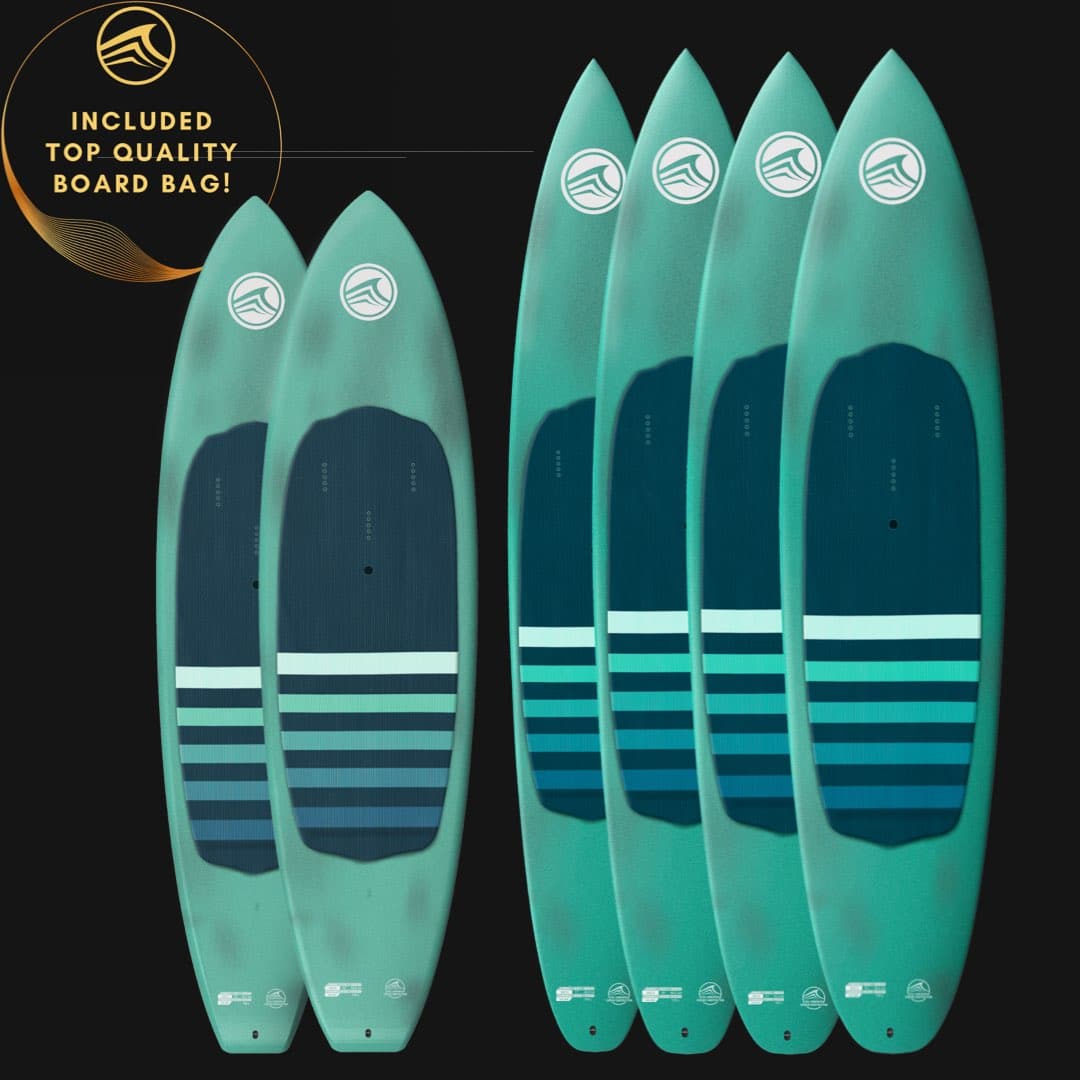
1. Gear up for SUP downwind
By definition, downwind means riding down the swell, in our case with a board equipped with a foil. It therefore seems obvious that equipment can have a fundamental impact on downwind practice, and is therefore ultra-important.
Choosing your downwind board
The choice of board is crucial, as it will enable you to take off as quickly as possible. The longer and narrower your board, the better its glide will be, enabling you to take off in light swell. But this also implies reduced stability, which can lead to falls. Choose flat or slightly double-concave hulls. Some brands offer round but very unstable hulls. As boards are not very wide, optimizing stability to maximize your chances of flying is fundamental. This will also increase your useful practice time.
When starting out, it’s important to choose a board with a minimum width (don’t overestimate yourself), such as our DW 7’2W, which is 22 inches wide.
The more you progress, the more your balance will improve, enabling you to take narrower boards that are less cumbersome in the air and above all more gliding, such as our DW 7’2, which is 20 inches wide.
For those who want to go 100% downwind, we’ve launched the DW 8’3 range : a board specifically designed for downwind rowing. We have 4 sizes: 8’3 x 17, 8’3 x 19, 8’3 x 21 and 8’3 x 23.
Latest information on the board. A shorter board will be more difficult to paddle because you’ll have to row (when you paddle to the right, it goes to the left and vice versa).
So a 7’2 will be perfect if you want to do wing foil and downwind. On the other hand, if you want to optimize downwind at 100%, go for bigger boards like our Dw 8’3 range.
The choice of foil
The mast:
The choice of mast is crucial. The stiffness of a mast is fundamental for maximum control in your turns. The stiffer your foil, the more precise your support will be. If you’re using an aluminium mast, you’ll need a mast in the 17 cm range to accept large front wings from foil. On the other hand, with carbon, you’ll need the best ratio between very thin and stiff mast. Generally speaking, a 14mm high-modulus mast (100% high-modulus M40J) is perfect for downwind flying. You’ll gain in glide and finesse of flight, so you can fly more with less effort.
Front fin size: This is the engine of the foil, the size of your fin will influence your ability to turn as well as your ability to start early and connect while pumping if necessary. A small fin will be easier to handle, but will have less power to pump. The choice of fin is also influenced by weather conditions: when the swell is large and powerful, the surface area of the fin becomes smaller.
We have launched a range specifically for Downwind. It‘ s the Downwind UHA range. A range of front fins with high aspect ratio to maximize glide.
To start with, we advise you to use the largest 1260 UHA to maximize take-off and flight time. Then, as your level, size and conditions change, you can reduce the size of the front winglet.
Fuselage: The length of the fuselage influences the responsiveness of your foil, freeing the foil for pitching. A shorter fuselage makes the foil more responsive, maneuverable and unstable. A longer fuselage provides greater stability. It is also possible to find a fuselage where the mast/fuselage junction is set back to allow more efficient pumping.
The stabilizer: As the name suggests, the aim is to stabilize the foil, so a large stabilizer will make your foil more “docile”, and a small one more lively. A smaller stabilizer will reduce drag and increase the speed of your foil.
Foil Carbon or Alu: Both work very well, it’s a question of budget. An aluminum foil will be cheaper and more resistant to impact. A carbon foil will be faster and easier to handle thanks to its reduced rope and thickness, but it will be more expensive.
SROKA’s UHA 1260 cm2 front fender with 80 cm mast and standard fuselage is an example of foil ideal for downwind flying.
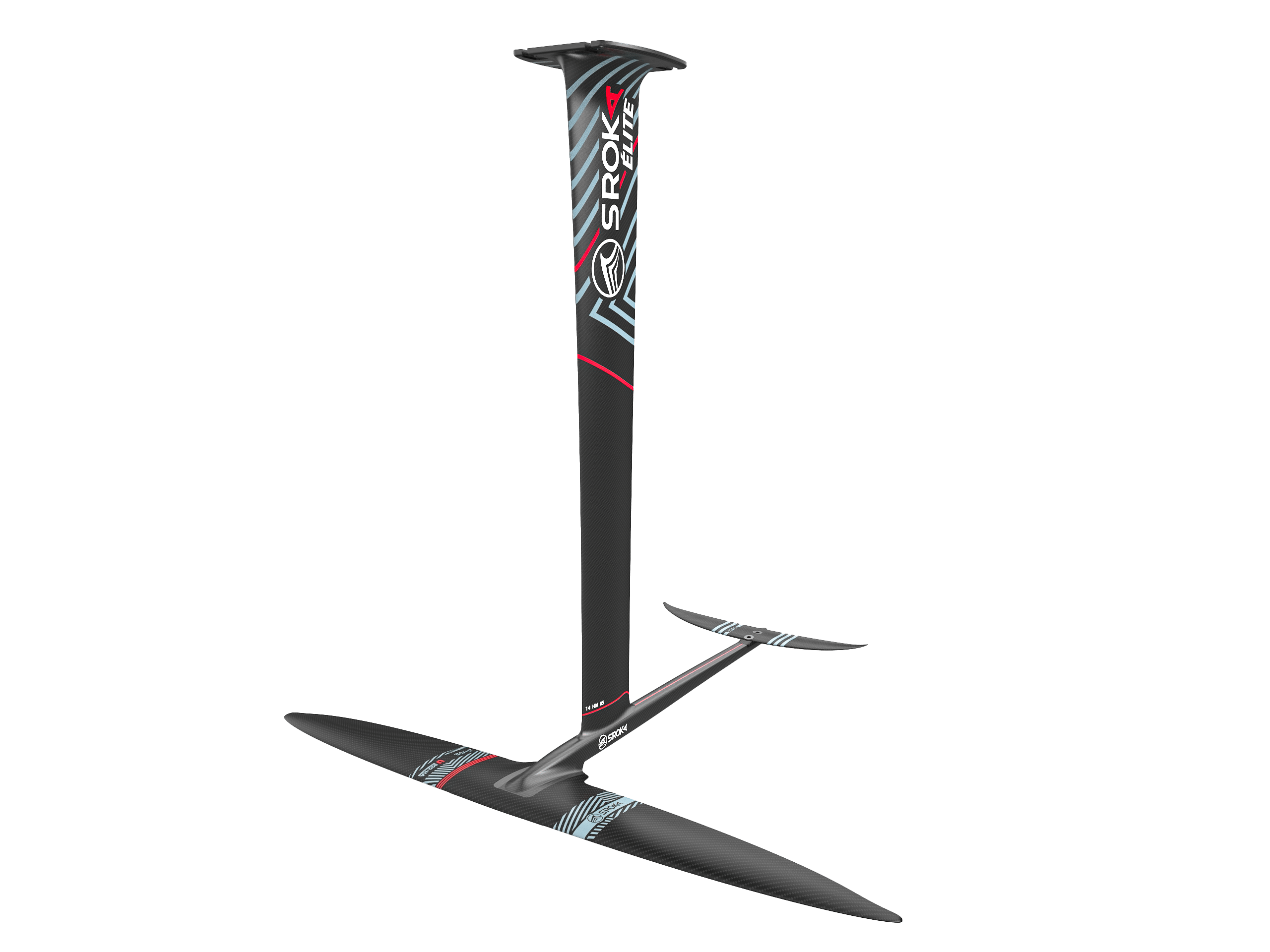
Choosing the right paddle
A carbon paddle will clearly be more efficient. To be most effective, you should opt for a carbon paddle with at least 50% carbon.
If you’re not totally comfortable, put on a helmet and buoyancy vest or impact vest. The aim is always to have fun, so it’s best to avoid injury.
Paddle alternative
Recently, a solution seems to have emerged to use a small traction kite connected directly to a small bar to start very early without needing to row. It’s called the para wing. In concrete terms, instead of rowing, inflate a small kite with the wind, and let yourself fly with it. When you want to, fold the wing into a small bag and fly effortlessly.
This alternative is designed for beginners or those who want to discover the activity with a low level of rowing technique.
The ultimate advantage of this downwind parawing solution is that you can take off even if you’re no longer strong enough to row (which can also be seen as a safety feature).
2. Spotlight selection
Don’t overestimate yourself, choose a spot with few people to start with and, above all, stay away from everyone to avoid colliding with another person.
Choose conditions where take-off is easy but the chop doesn’t throw you off balance. Find a spot where the swell is right in line with the wind.
Watch out for low tide, when there is generally no bottom and the swell may be smaller in some places.
3. Learning balance and stability foil downwind
Before launching yourself on a wave, get used to the board’s stability. If you’re a complete beginner, try paddling on flat water to get a better feel for how the board reacts. E ntrain yourself to always row on the same side while trying to go as straight as possible. This exercise will help you improve your rowing technique.
4. Efficient paddling technique Foil downwind
Technique differs slightly between short and long boards. But efficient paddling is the key to getting off to a good start. It’s the explosiveness of your movement that will get you going fast and allow you to pick up speed and be propelled by the wave.
Practice like on the flat start video (even if you can’t make a flat start).
Once in the air, a few well-timed paddle strokes can save you in situations where you risk losing flight, such as losing a swell train or becoming unbalanced.
If you’ve managed to generate enough lift to start on the flat (or if you feel you’re not far from take-off), it’s time to choose a slope to help you with a wave.
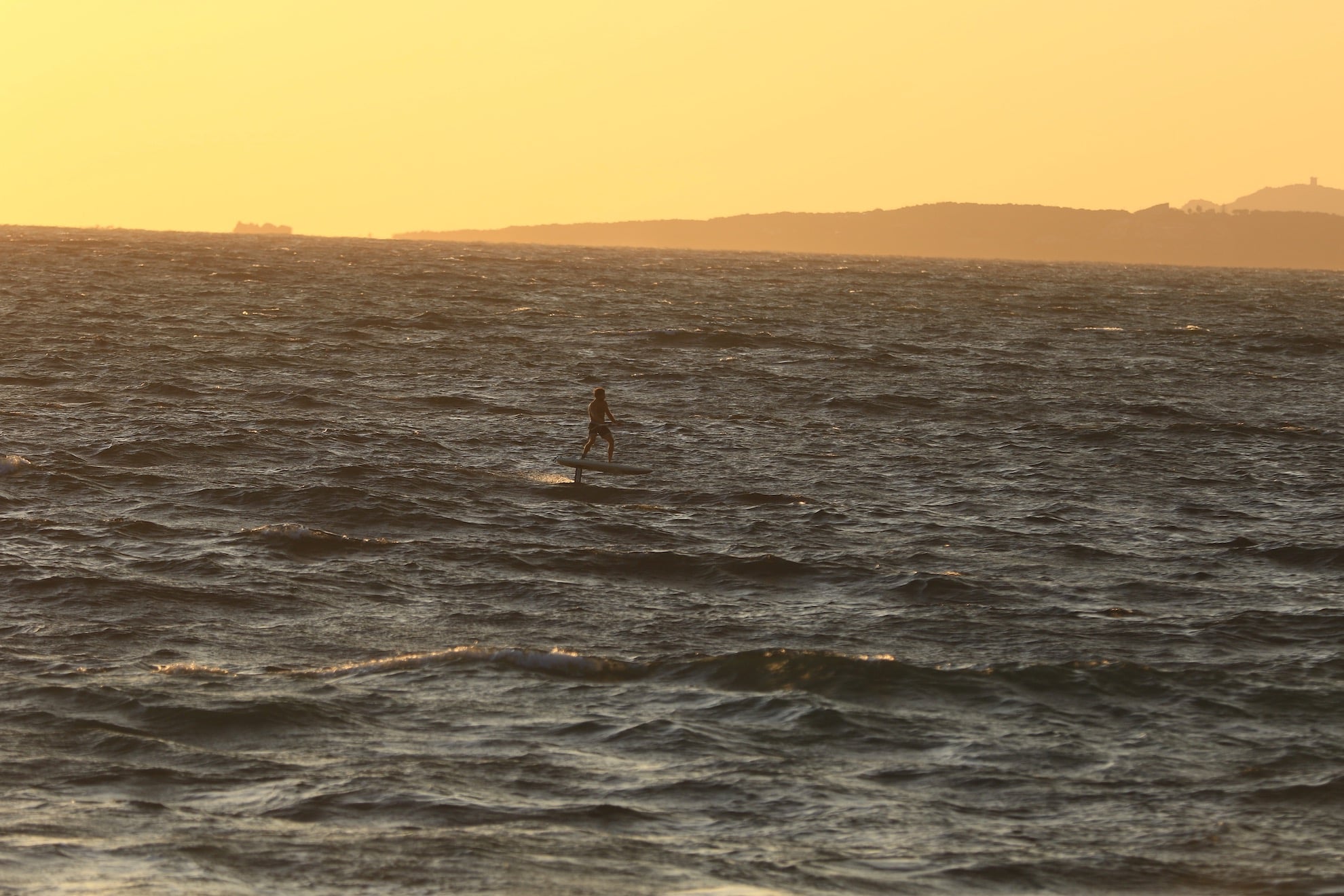
5. Observe the swell and water conditions and select the right slope.
In downwind mode, a large part of your efficiency will depend on choosing the right “bump” to start.
Observe the water and choose the right bump (sufficiently deep) to try to fly.
Bumps usually come in sets of 2, 3 or 4, and try to choose the biggest one to get the maximum power for take-off. Be the most explosive at this point. You’ve got 2-3 seconds to give it your all. If you’ve managed to synchronize the oar with the slope, you’ll have enough power to take off.
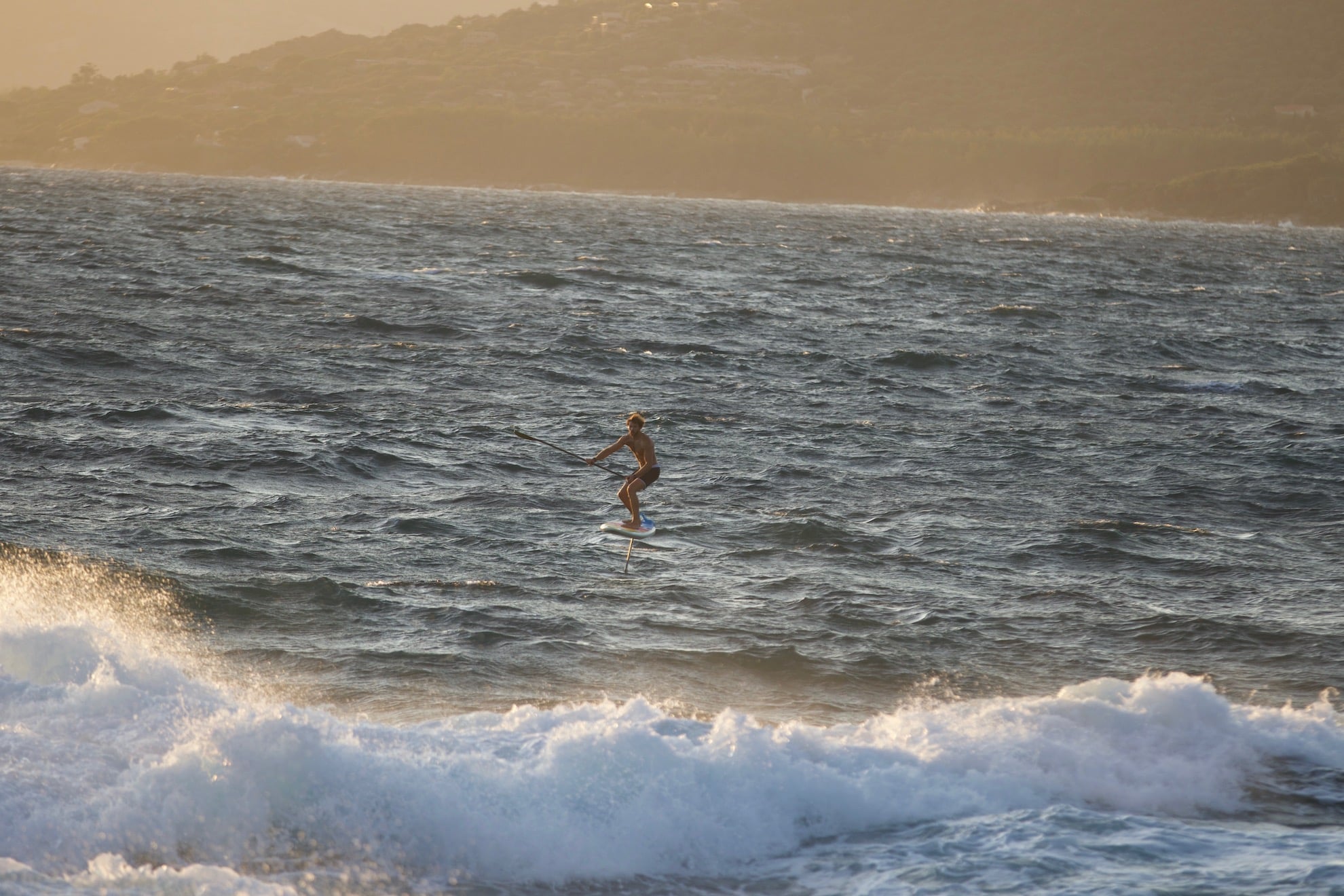
Bonus! Safety and best practices in downwind
As we briefly mentioned earlier, the aim of these sports is purely recreational: there’s no need to put yourself in danger just so you can say you’re stronger or weaker than your neighbor. So if you’re away from the board, opt for safety equipment. If you’re close to the shore, no need.
So if you’re going far away, it’s absolutely essential to be equipped: helmet and impact vest are the minimum.
The best security is to practice in a group, with everyone looking out for each other.
But to avoid problems, it’s a good idea to take it with you:
- a telephone
- a GPS watch (ultra 2)
- a fluorescent vest
- distress flares if necessary
- a tow bar
- A secumar belt may be a solution. It’s a belt that inflates with a CO2 cartridge and a distress rocket.
If you have any further questions, or if you have any other requests, please don’t hesitate to contact us!
 Le Magazine
Le Magazine



